The agricultural sector employed 874 million people in 2020. This amounts to 27% of the global workforce. Between 2000 and 2019, the total production of primary crops increased by 53%, which is 9.3 billion tonnes. All this boils down to a booming agricultural sector globally.
For those in the agricultural business, knowing the right tools to use on a farm can benefit turnovers significantly, and allow one to capitalize on the potential of one’s farm. This article will outline the key machine selection tips for agricultural equipment, so that buyers can confidently make the right purchases for their needs.
Table of Contents
Tractors
Power and rotary tillers
Cultivators
Ploughs
Harvesters
Shellers
Fertilizer spreaders
Sprayers
Final thoughts
Tractors
A Tractor is a machine that provides high torque over low speeds.
Factors to consider when selecting a tractor
Ease of operation
70% of damage to a tractor is due to a lack of knowledge on how to operate a tractor. Businesses should choose a tractor that can be easily operated. In addition, it is important to have lessons on how to operate the tractor before purchasing it.
Cost
The cost of the tractor is divided into two: the initial purchase and the cost of parts. The initial cost should be compared against the budget for the tractor. Businesses should not spend beyond their projected budget. The parts bought should be of superior quality too. However, it does not mean that they should be expensive parts. Instead, businesses should look for genuine parts that are also affordable for them.
Power take-off
Modern tractors have a power take off shaft located at the rear or front of the tractor and this provides rotary power to stationary and pulled machinery. The shaft provides power to the implement, eliminating the need for a separately mounted power source. Modern tractors will also provide additional hydraulic or electric power. Businesses need to know how adding power take off systems will affect other parts of the tractor.
Transmission
Tractors have different transmission types. They include gear-driven transmission, CVT transmission, hydrostatic transmission, and power shuttle transmission. These power transmissions have advantages and work better than others in specific scenarios. Buyers should therefore consider the advantages of the transmission in the tractor they purchase.
Engine
The engine of the tractor measures power in horsepowers. An excellent consideration to make when selecting an engine is the size of the land it will be used on. It is recommended to use one hp for 2 hectares of land. A 40-hectare farm will therefore require a tractor with 20 – 25hp.
Dealer support
Businesses should purchase parts from recognized brands to get durable and quality parts. If they buy from an aftermarket, the business may save on the cost of the parts but spend more on repairs in the long run. In addition to this, purchasing parts from the manufacturer of the tractor is recommended.
Emission standard
The business should also consider the emissions standard of the engine selected. Current standards are EU 6 in the UK and Tier 5 in the USA. Knowing this will help the business pick tractors that are also environmentally friendly.
Power and Rotary tillers
A Power and rotary tiller is a motor-driven machine with rotating blades for breaking up and tilling the soil.
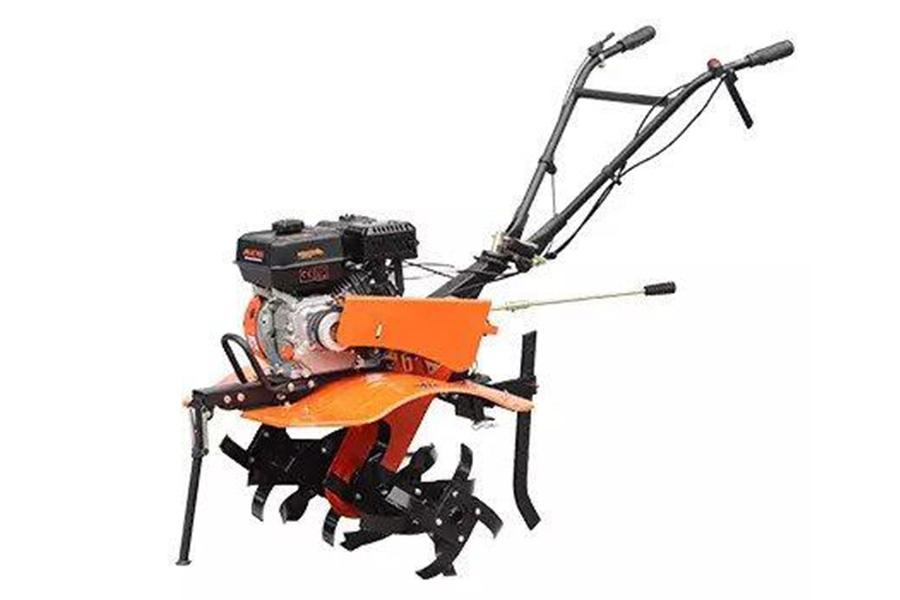
Factors to consider when selecting a power or rotary tiller
Type of soil
Mini tillers can till soft soil well. However, it will skip many rocky and hard soil sections instead of tilling. It’s therefore advisable to use a large tiller on hard surfaces. Alternatively, a plowing machine should be used before using a mini tiller on hard surfaces.
Farm size
The tiller purchased by the business will be affected by the size of the land to till. Land size less than 1500 m2 will require a mini-tiller, while medium-sized land less than 5000 m2 will require a tiller with 5 hp. Land larger than 5000m2 will require a tiller with more than 6 hp.
Engine type
There are four types of engines. Electric, hand-powered, battery-powered, and gas-powered tillers. Gas-powered tillers are the most powerful, but are complicated tillers to use. Electric tillers are affordable and more popular. They are powered by plugging into a mains power outlet. Hand-powered tillers have no engine. The user will have to do all the work themselves while battery-powered tillers have no power cord. They use a battery to power the engine. Businesses should select a power tiller based on the engine that best suits them.
Maximum tilling depth and width
The tines of the tiller determine the depth that the tiller can reach. Tines are the rotating blades of the tiller. There are two types of tines. Front tine tillers can dig up to 8 inches deep, while rear tine tillers can till 6 to 12 inches.
Cultivators
A Cultivator is a machine that breaks up the ground and uproots weeds.
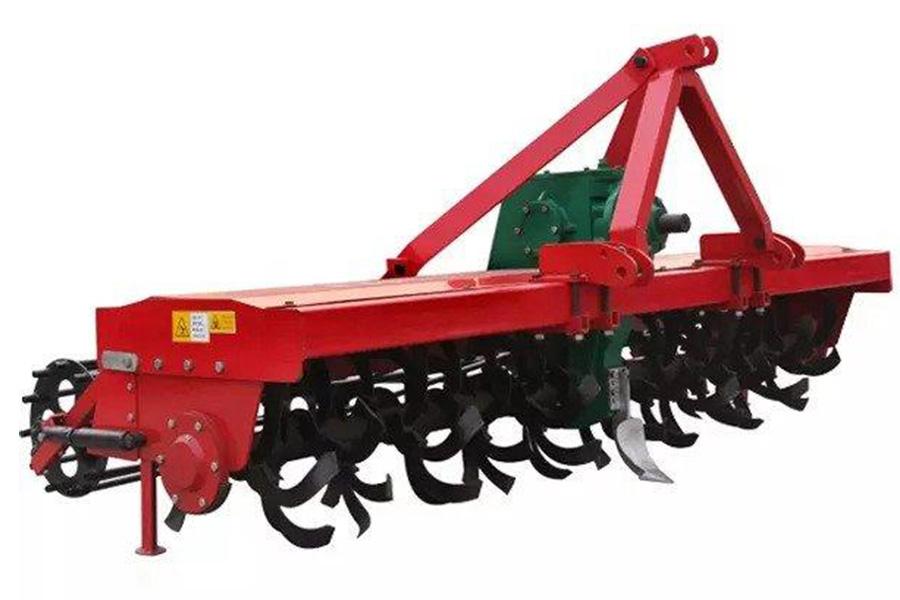
Factors to consider when selecting a cultivator
Garden size
Large-sized gardens of around 6000 square feet require cultivators with a minimum of 6 hp. Medium-sized gardens of more than 1500 square feet will work best with a cultivator with 5 hp, while small gardens require small cultivators.
Use
If a business wants a cultivator to break down heavy clay for a new bed, they should purchase a large cultivator. Large cultivators come with attachments such as a wood chipper or wagon suitable for large farms. If the cultivator is to be used on loam and soils, then a medium-sized cultivator is suitable. Small cultivators are best used in established beds. Small cultivators come with attachments such as mid tillers for weeding in the garden.
Weight and maneuverability
Businesses should buy cultivators depending on the operator who will use them. A large cultivator weighs over 200 pounds, while a medium cultivator weighs between 100 and 200 pounds. The operators should be able to handle it.
Design
Front tine cultivators have the tines in the front of the machine and the wheels at the back. The challenge of these cultivators is that the wheels roll over the land that has just been tilled, causing compaction. Rear tine cultivators have wheels at the front and the tines at the back. They don’t have compaction. Reverse rotation cultivators have tines moving in the opposite direction.
Power source
Cultivators use fuel or electricity as a power source, depending on their size. Small-sized cultivators use electricity since they don’t require much power. They are quiet, simple, and reliable compared to fuel-powered cultivators, which produce more power and are bigger, heavier, and noisier. They can have a 200 cc engine which produces between 6.5 – 9 hp while the electric ones produce around half of this.
Ploughs
A Plough is a farming implement with large blades that turn the soil over and create furrows on the ground before planting seeds.
Factors to consider when selecting a plow
Soil type
Businesses should consider which category of soil they want to plow. Sandier soils require less tillage because they warm up and dry out faster. Clay soils will require more tillage to bury some of the residues, so they warm up more quickly in spring.
Crop rotation
Farmers who rotate their crops over three years will require less tillage. This will lead to better residue management on their farm. However, when farmers plant one type of crop, such as corn, for over 3 years, they have to employ heavy tillage to manage the residue on the farm. There are alternatives, such as using a moldboard plow, though this could lead to a high rate of soil erosion since it exposes a lot of the soil on the surface.
Slope
When the soil has a slope of over 3%, the plow’s depth and intensity should be minimized to protect the soil. Businesses should be careful about having plows that allow for adjustability to light tilling to incorporate different slope requirements.
Harvesters
A Harvester is a farm implement used to automatically harvest crops from the farm.
Factors to consider when selecting a harvester
The right class
Harvesters are categorized into classes. Businesses should ensure that the machine has the right power and cleaning shoe area that the business requires. The higher the class, the more the capabilities. It is therefore essential to consider the classes a manufacturer offers before making a purchase.
Capacity
Businesses should ensure that the harvester’s capacity shouldn’t be more than what the grain header can handle. There are several grain headers: auger, windrow, draper, and stripperheads. In addition to this are grain headers that are specific for each crop. Selecting the correct header will help minimize losses.
The right processor
For a business to select a suitable processor, they’ll need to be aware of the crops they plant. Manufacturers provide settings to adjust concave clearance and shoe openings depending on harvested crops. Knowing the settings that are used is, therefore, necessary. For example, if the speed setting is fast and the concave clearance is small, it could lead to damaged grains.
The right cab
The operator’s cab should be comfortable and allow long working hours. Reputable brands have ensured that the cabs have storage space, safety features, and connectivity and are heated or cooled. Besides this, some cabs have entertainment systems to ensure the operator’s comfort. Businesses should pick cabs that have comfort.
Residue management
Residue management is an essential factor to consider. Businesses should select harvesters that allow switch chopping and rowing abilities without swapping components. Manufacturers are developing harvesters with more soil contact, wider spreading, and finer chopping for better yields. New models will allow the operator to switch between modes such as spread and windrow modes.
Shellers
Shellers are agricultural machines that remove the shell of seeds such as groundnuts.
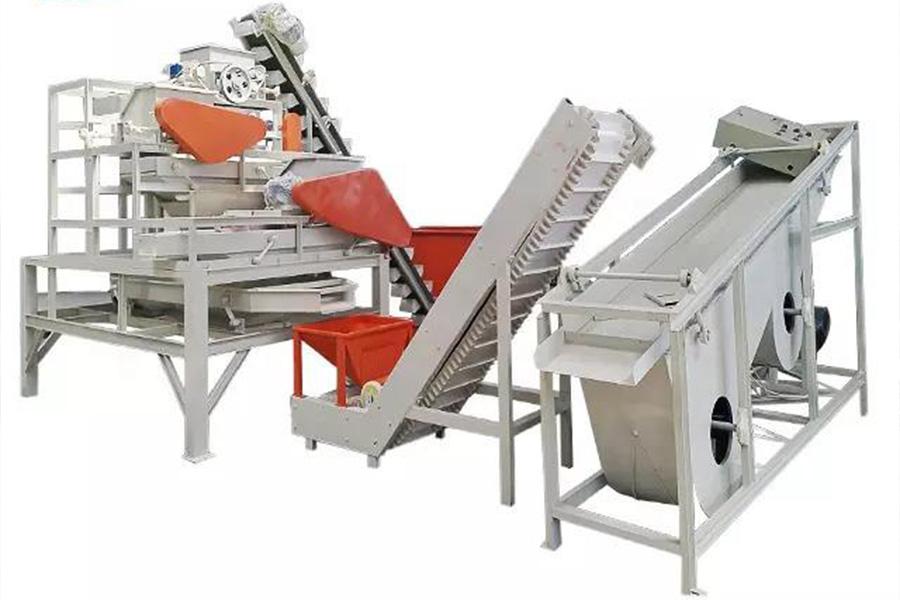
Factors to consider when choosing a sheller
Maintenance of the sheller
Shellers are bound to have a lot of dust from the grains they shell. Their maintenance is essential. Businesses should therefore consider purchasing from manufacturers who offer support on how to operate and maintain the sheller. They should also consider the availability of spare parts and personnel who can repair them.
Cost
The price of the sheller will vary based on the size and the technology used. Manual shellers for different grains are sold between US $30 – US $60. Large-sized shellers used for industrial purposes cost US $2100 and above. They’re automatic and don’t require any manual labor. Mid-sized shellers cost between US $300 – US $800. They have a petrol engine attached to power them.
Fertilizer spreaders
Fertilizer spreaders are machines that spread manure on the farm evenly.
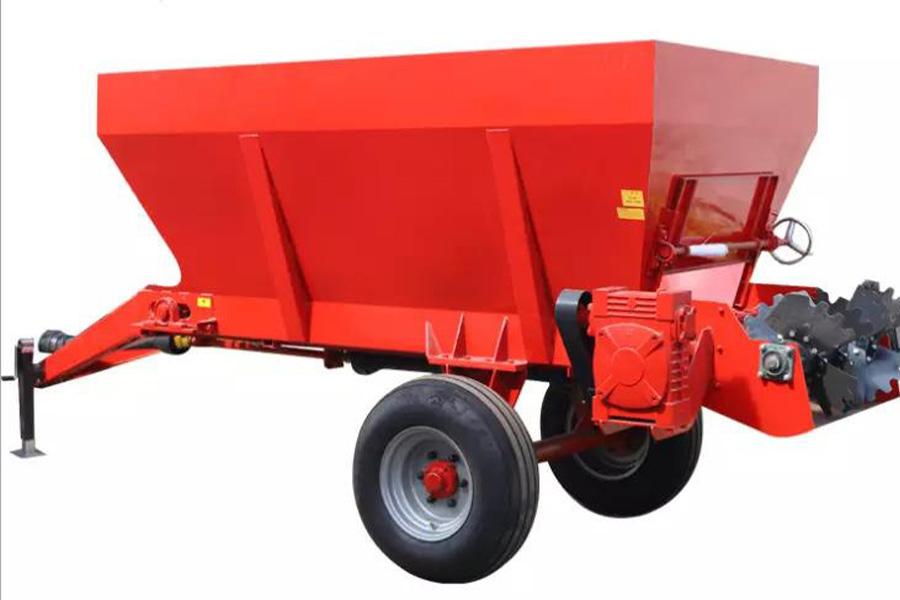
Factors to consider when selecting a fertilizer spreader
Material to be spread.
Different spreaders will spread fertilizers differently. Lime, manure, gypsum, litter, and fertilizer have different consistencies, moisture content, and density. They all require different fertilizer spreaders to handle them.
Spread pattern
A wide pattern is not advisable when the narrow field requires only a few passes. Wide patterns are recommended for large fields with few passes to reduce the labor required and the time is taken. Furthermore, to maximize the yield of the field, the evenness of the spread is equally essential.
Warranty and reputable manufacturer
Businesses are advised to select fertilizer spreaders from reputable manufacturers. They should take note of any warranty and discounts the manufacturer offers. In addition, they should check the availability of spare parts and personnel to conduct maintenance of the machine. Some manufacturers offer training for the operators of the machine and also on how to maintain the fertilizer spreader.
Sprayers
Sprayers are farm implements used to spray herbicides and pesticides on crops on a farm.
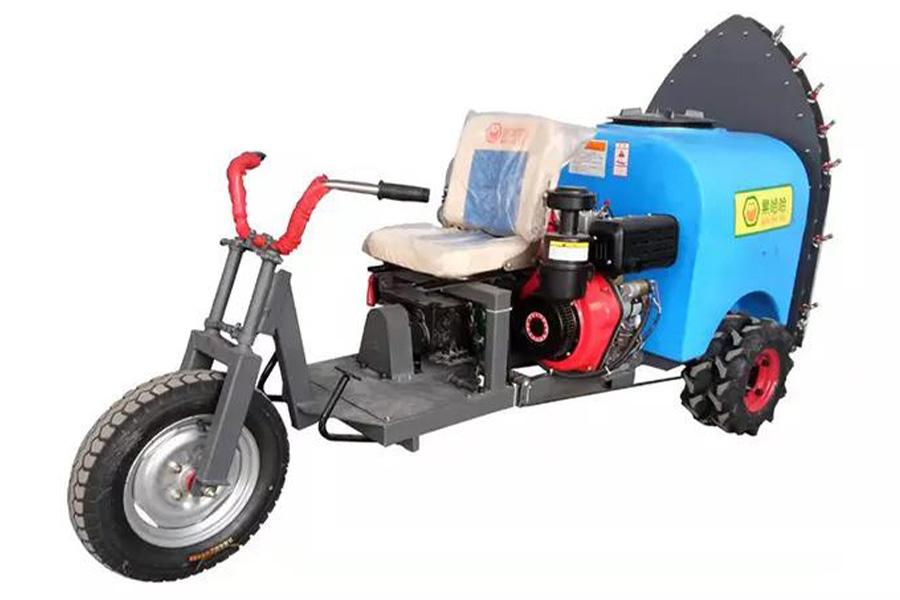
Factors to consider when selecting a sprayer
Size of area to be sprayed
A small sprayer will be suitable for small pieces of land. Businesses buying sprayers for commercial purposes will have to take sprayers with huge capacities, such as the 400-gallon sprayer. The smallest sprayer capacity is the 15-gallon sprayer. It is handheld and can be operated by one person to spray a garden.
Weather conditions
Spraying crops with chemicals may be helpful. However, crops need to be sprayed with different chemicals. Businesses should therefore consider the weather conditions of an area before spraying. The temperature and moisture level will determine whether the chemicals will seep into the soil. The nozzle size should enable the adjustment of the droplet size and the precision of the spray.
The type of crop to be sprayed
The crops being sprayed all have different needs. Some may require precision while targeting pests in a specific location, while others may require spraying the entire plant. It is recommended that businesses confirm with their dealers the crops they want to spray to be advised on the best sprayer.
Time and effort versus the cost of the machine
Businesses should also weigh the cost of the sprayer against the time and effort required to operate it. A small sprayer will cost between US $20 – US $50. It may take a lot of time to spray over 100 acres. It would be better to invest more if the land size is large to reduce the spraying effort.
Final thoughts
Knowing the right farming equipment can help businesses save on costs incurred during farming. In addition are increased yields and better farming practices. This article has helped show businesses what to look for when purchasing agricultural farming equipment, and for those who want to know more, there is a variety of farming equipment available on Chovm.com.





 বাংলা
বাংলা Nederlands
Nederlands English
English Français
Français Deutsch
Deutsch हिन्दी
हिन्दी Bahasa Indonesia
Bahasa Indonesia Italiano
Italiano 日本語
日本語 한국어
한국어 Bahasa Melayu
Bahasa Melayu മലയാളം
മലയാളം پښتو
پښتو فارسی
فارسی Polski
Polski Português
Português Русский
Русский Español
Español Kiswahili
Kiswahili ไทย
ไทย Türkçe
Türkçe اردو
اردو Tiếng Việt
Tiếng Việt isiXhosa
isiXhosa Zulu
Zulu